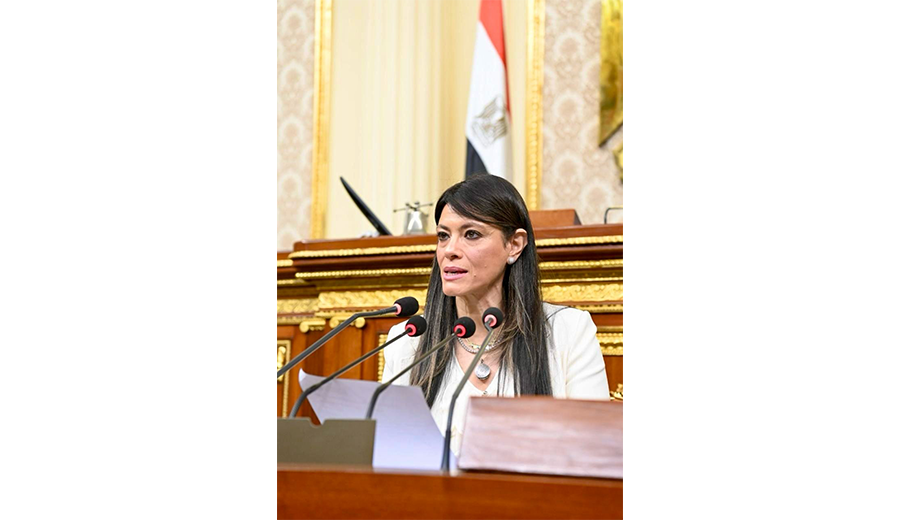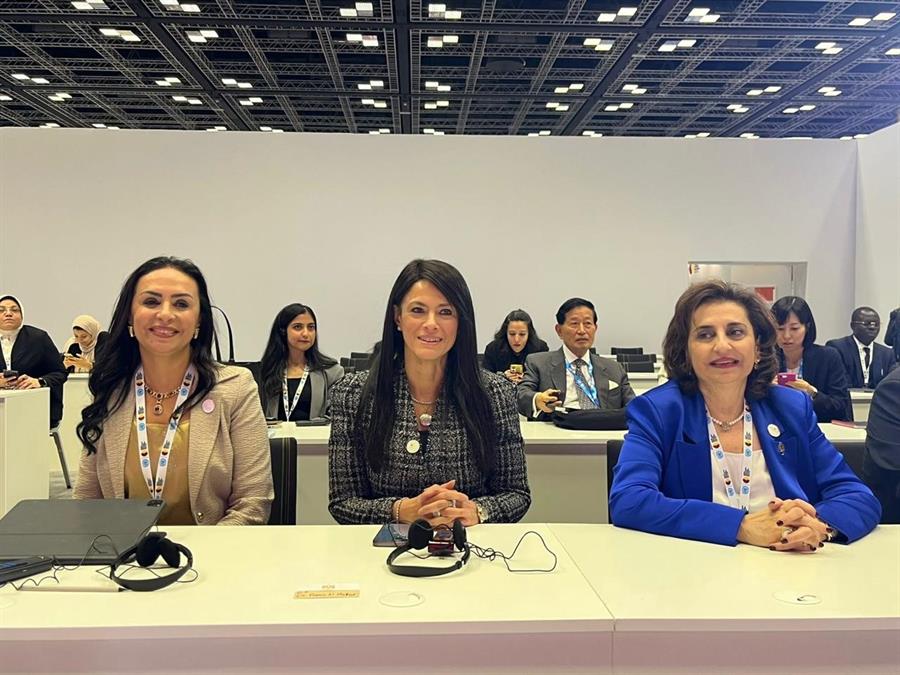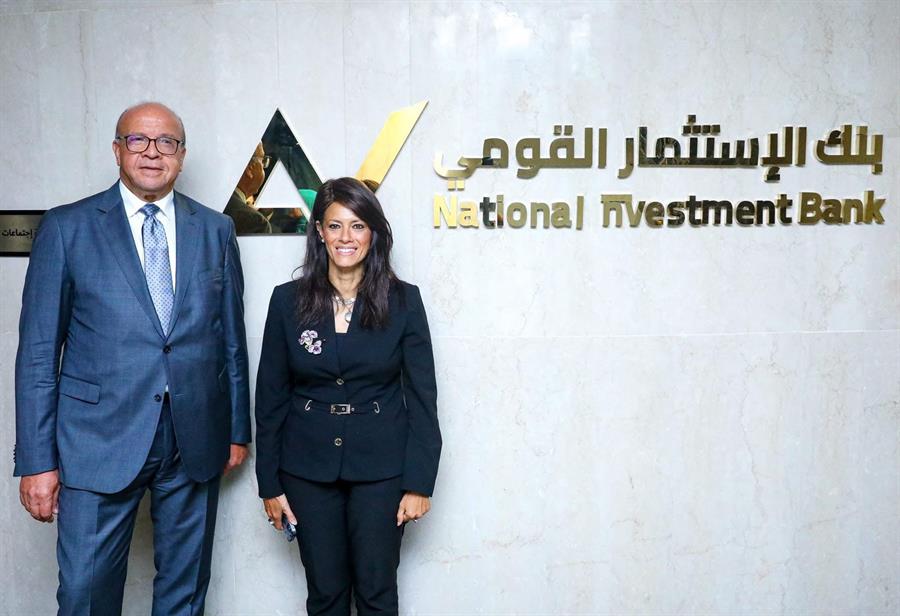Minister of Planning, Economic Development and International Cooperation Reviews Sectoral Investment Targets in the Development Plan for the Next Fiscal Year

15 April 2025
327 billion Egyptian pounds in public investments directed to the health, education, scientific research, and other services sectors in the 2025/2026 plan.
86 billion Egyptian pounds in public investments for the health sector and 63.4 billion Egyptian pounds for the educational services sector.
The plan aims to establish 17.3 thousand new classrooms, develop 1851 existing schools, and rehabilitate, replace, and renovate 12.5 thousand classrooms in pre-university education.
Incentivizing private sector participation in establishing technical education schools and accelerating digital transformation in the educational process.
Plan to develop technical education: 536 new classrooms and 10 technological schools to meet labor market needs.
We are working on developing a comprehensive and integrated vision for the executive plan of the second phase of the National Project for the Development of the Egyptian Family.
H.E. Dr. Rania A. Al-Mashat, Minister of Planning, Economic
Development and International Cooperation, reviewed the sectoral features of
the 2025/2026 plan, highlighting the plan's directions in achieving the
dimensions of sectoral development, during the House of Representatives session
today, chaired by H.E. Counselor Dr. Hanafy Gebaly, and in the presence of the
esteemed members of the Council.
In her speech, H.E. Dr. Al-Mashat affirmed that the
fundamental goal of development efforts is to build the Egyptian person.
Therefore, the plan has been intended to give utmost importance to
consolidating the dimensions of human development by directing a significant
proportion of total investments to identify and develop health and educational
services and make them available to all citizens in various regions of the
Republic. This aims to reduce qualitative and spatial gaps and continue to
improve Egypt's position in the global Human Development Index.
Public Investments in the Health, Education, and Scientific
Research Sectors
H.E. Minister Al-Mashat added that the 2025/2026 development
plan directs public investments amounting to approximately 327 billion Egyptian
pounds to the health, education, scientific research, and other services
sectors.
As the primary goal of development efforts is to build the
Egyptian person, the development plan has been focused to give utmost
importance to consolidating the dimensions of human development by directing a
significant proportion of total investments to modernize and develop health and
educational services and make them available to all citizens in various regions
of the Republic. This aims to reduce qualitative and spatial gaps and continue
to improve the indicators of human development, the index of which has
gradually increased from 0.706 in 2015 to 0.75 in 2023/2024.
Regarding the improvement of the health and education
system, the Minister of Planning, Economic Development and International
Cooperation affirmed that approximately 85.6 billion Egyptian pounds have been
allocated as public investments for the health sector and 63.4 billion Egyptian
pounds for the educational services sector, and about 178 billion Egyptian
pounds for other social services.
The state's general budget contributes to the financing with
approximately 219 billion Egyptian pounds, equivalent to two-thirds of the
total investments directed to these three sectors, emphasizing the importance
of investing in human capital development as a driving force for the
advancement of the Egyptian person and enhancing their effectiveness in
embarking on the path of sustainable development.
H.E. Dr. Al-Mashat pointed to the pre-university education
sector, where the plan includes the establishment of 17.3 thousand new
classrooms, the development of 1851 existing schools, and the rehabilitation,
replacement, and renovation of 12.5 thousand classrooms.
The development plan aims to improve existing schools and
provide new classrooms to reduce classroom density and expand the provision of
education services, especially in the most needy areas, and to direct
investments to basic education schools, particularly in the governorates of
Cairo, Alexandria, Giza, Beheira, and Fayoum, in addition to expanding
educational buildings.
The plan's directions included increasing attention to
qualifying schools for quality, committing to the implementation of the plan to
appoint 150,000 teachers, as well as activating literacy programs, especially
in governorates with high illiteracy rates, and expanding the establishment of
nurseries.
H.E. Minister Al-Mashat reiterated that in the field of
technical education, the plan aims to establish 536 new classrooms, rehabilitate
and renovate about 902 classrooms, and develop and rehabilitate 126 existing
schools. In addition, it includes the application of competencies and the
establishment of 10 applied technological schools.
H.E. Dr. Al-Mashat pointed out that the plan aims to
encourage partnership with the private sector to establish these schools in
order to meet the labor market's needs for this specialized type of school
graduates, as well as accelerating the digital transformation that supports the
educational process due to its great importance in developing students' skills,
in addition to continuing to develop curricula to improve the quality of school
education outcomes and develop students' abilities in innovation and
creativity.
Regarding the field of university and higher education, H.E.
Minister Al-Mashat added that the 2025/2026 plan includes the completion of
educational building and university city projects in 29 public universities,
the provision of workshop and laboratory equipment in 12 technological universities,
and the completion of electronic examinations in Egyptian universities.
This stems from the aim to improve the quality of higher
education and increase the international competitiveness of Egyptian
universities, in light of increasing the competitiveness of higher education by
developing a package of investment incentives encouraging the private sector to
invest in establishing more private universities, particularly with the
achievement of high accessibility rates in public and national universities,
and increasing attention to projects for qualifying Egyptian public
universities to obtain quality and increase international competitiveness,
which contributes to increasing exports of education services and increasing
the number of universities listed in international rankings.
Advancing Health Services
The Minister pointed to the public investments directed
towards the advancement of health services, estimated at about 86 billion
Egyptian pounds in the 2025/2026 plan, including an increase in investments
funded by the public treasury by more than 87%.
The main projects targeted by the plan include the
completion of 47 health and university hospitals, including 41 health hospitals
and 6 university hospitals, with completion rates exceeding 70% in preparation
for their entry into service. These include 15 hospitals for therapeutic care,
10 hospitals for the first phase of the comprehensive health insurance, 4
hospitals for the second phase of the comprehensive health insurance in the
governorates of Matrouh, Minya, North Sinai, 3 hospitals under the General
Authority for Specialized Medical Centers, and 3 psychiatric hospitals.
H.E. Dr. Al-Mashat added that the implementation of 17
Egyptian family development centers, 9 health units, and the plasma center in
Sohag Governorate has also been completed. This is in addition to completing
the development and equipping of 75 therapeutic care hospitals, 50 hospitals
affiliated with the General Authority for Specialized Medical Centers, 27
psychiatric health authority hospitals, and 11 plasma centers.
The initiation of 10 model hospitals, including 2 hospitals
in Minya and Kafr El-Sheikh, is also underway, alongside the implementation of
172 projects in the field of developing university hospitals, completing their
automation, and completing the development and equipping of medical centers and
units, such as completing the central laboratories building in Badr City, the
medical city at Nasser Institute, developing control centers, and equipping the
unified national network for emergencies and public safety.
The Minister confirmed the plan's target to enhance the
accessibility of health services by increasing the rates of doctors per 10,000
people and the rate of hospital beds available, with special attention directed
to the development and generalization of the primary healthcare sector and
preventive medicine departments, as well as continuing the effective
implementation of the national comprehensive health insurance program in the
remaining governorates of the Republic.
In the field of sports services, H.E. Minister Al-Mashat
outlined that the plan aims to expand the establishment of youth facilities and
develop 156 youth centers, as well as establish and develop 10 youth cities, 6
youth camps, 4 youth development centers, 3 civil education centers, 3 scouting
facilities, 5 youth forums, and 2 youth hostels. This is in addition to
expanding the establishment of sports facilities by constructing and developing
28 playgrounds, developing 8 stadiums, 53 clubs in addition to 9 clubs for
people with special needs, 4 sports cities, 18 swimming pools, 2 sports
medicine hospitals, and 9 sports medicine units.
The National Project for the Development of the Egyptian
Family
H.E. Minister Al-Mashat touched on the high importance the
government attaches to continuing the implementation of the National Project
for the Development of the Egyptian Family with its integrated developmental
axes and dimensions, which include women's economic empowerment, service
intervention, cultural, awareness, and educational intervention, digital
transformation, monitoring and evaluation, and legislative intervention, within
the framework of managing the population issue according to a comprehensive
developmental perspective.
H.E. Dr. Al-Mashat explained that the efforts to implement
the project in its first phase (2021-2024) resulted in approximately 28 million
citizens benefiting from the project's services until October 2024. The
percentage of beneficiaries from the cultural and awareness intervention axis
reached 66%, while 31.5% benefited from the economic empowerment axis
interventions.
This resulted in a noticeable improvement in demographic
indicators, including a decrease in the population growth rate from 1.9% in
2018 to 1.4% in 2024, as well as a decrease in the annual number of births from
2.5 million births in 2018 to 1.97 million in 2024. The lowest population
growth rate in Egypt during the first quarter of 2025 was recorded at 1.34%,
compared to about 1.4% in the corresponding quarter of 2024 and 1.6% in the
same quarter of 2023.
H.E. Minister Al-Mashat emphasized that the Ministry is
currently working on developing a comprehensive and integrated vision for the
executive plan of the second phase of the project, setting measurable targets
and indicators that are consistent with national and sectoral strategies such
as Egypt's Vision 2030, the government's work program, relevant presidential
initiatives, Egypt's partnership frameworks with development partners, and the
Sustainable Development Goals.









